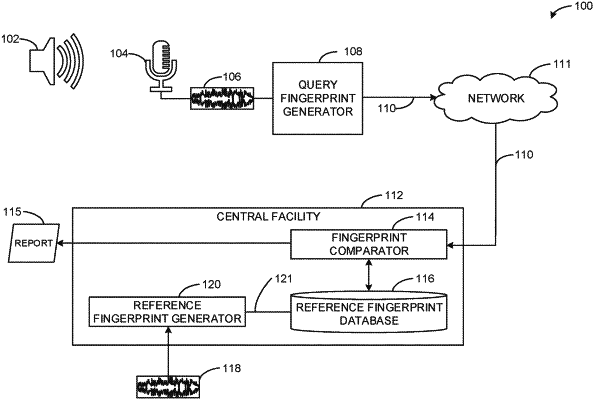| CPC G10L 25/51 (2013.01) [G11B 27/28 (2013.01)] | 17 Claims |

|
1. An apparatus comprising:
an audio segmenter to divide an audio signal into a plurality of audio segments including a first audio segment, a second audio segment temporally after and adjacent to the first audio segment, a third audio segment temporally after and adjacent to the second audio segment, and a fourth audio segment;
a bin normalizer to normalize the second audio segment to thereby create a first normalized audio segment based on first audio characteristics of the first audio segment, second audio characteristics of the second audio segment, and third audio characteristics the third audio segment and a second normalized audio segment based on fourth audio characteristics of the fourth audio segment and at least one of the first audio characteristics of the first audio segment, the second audio characteristics of the second audio segment, and the third audio characteristics the third audio segment;
a subfingerprint generator to generate a first subfingerprint from the first normalized audio segment, the first subfingerprint including a first portion corresponding to a location of an energy extremum in the normalized second audio segment, and a second subfingerprint from the second normalized audio segment;
a portion strength evaluator to determine a likelihood of the first portion to change based on changes to at least one of the first audio characteristics, the second audio characteristics, or the third audio characteristics; and
a portion replacer to, in response to determining the likelihood does not satisfy a threshold, replace the first portion with a second portion and determine if the second subfingerprint includes the first portion.
|